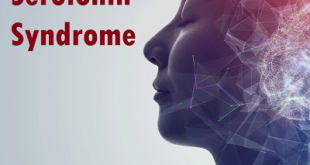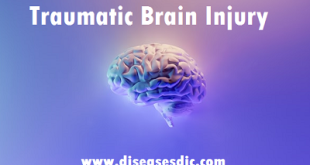Description
A brain aneurysm also referred to as a cerebral aneurysm or an intracranial aneurysm (IA), is a weak bulging spot on the wall of a brain artery very much like a thin balloon or weak spot on an inner tube. Over time, the blood flow within the artery pounds against the thinned portion of the wall and aneurysms form silently from wear and tear on the arteries. As the artery wall becomes gradually thinner from the dilation, the blood flow causes the weakened wall to swell outward. This pressure may cause an aneurysm to rupture and allow blood to escape into the space around the brain. A ruptured brain aneurysm commonly requires advanced surgical treatment.
Types of a cerebral aneurysm
There are three types of cerebral aneurysms:
- A saccular aneurysm. A saccular aneurysm is a rounded sac containing blood that is attached to the main artery or one of its branches. Also known as a berry aneurysm (because it resembles a berry hanging from a vine), this is the most common form of a cerebral aneurysm. It is typically found on arteries at the base of the brain. Saccular aneurysms occur most often in adults and are found in about 2 to 3 percent of the population.
- A fusiform aneurysm. A fusiform aneurysm balloons or bulges out on all sides of the artery.
- A mycotic aneurysm. A mycotic aneurysm occurs as the result of an infection that can sometimes affect the arteries in the brain. The infection weakens the artery wall, causing a bulging aneurysm to form.
Size
Aneurysms are also classified by size: small, large, and giant.
- Small aneurysms are less than 11 millimeters in diameter (about the size of a large pencil eraser).
- Large aneurysms are 11 to 25 millimeters (about the width of a dime).
- Giant aneurysms are greater than 25 millimeters in diameter (more than the width of a quarter).
Pathophysiology of Brain Aneurysm
The pathogenesis of cerebral aneurysms is related inherently to structural aberrations of the cerebrovasculature, although the etiology of these abnormalities may be diverse. The integrity of the internal elastic lamina is compromised, with associated elastic defects in the adjacent layers of the tunica media and adventitia. Muscular defects of the tunica media and minimal support of adjacent brain parenchyma augment the pathologic potential of chronic hemodynamic stress on the arterial wall. Focal turbulence and discontinuity of the normal architecture at vessel bifurcations may account for the propensity of saccular aneurysm formation at these locations. Distal aneurysms may be smaller compared with proximal sites, yet the risk of rupture may be dissimilar due to the relatively thinner parent artery wall thickness.
Causes
Currently, the cause of cerebral aneurysms is not clearly understood. Brain aneurysms are associated with several factors, including smoking, hypertension, and family history (genetic). The ultimate cause of a brain aneurysm is an abnormal degenerative (breaking down) change (weakening) in the wall of an artery and the effects of pressure from the pulsations of blood being pumped forward through the arteries in the brain. Certain locations of an aneurysm may create greater pressure on the aneurysm, such as at a bifurcation (where the artery divides into smaller branches).
Inherited risk factors associated with aneurysm formation may include, but are not limited to, the following:
- Alpha-glucosidase deficiency. A complete or partial deficiency of the lysosomal enzyme, alpha-glucosidase. This enzyme is necessary to break down glycogen and to convert it into glucose.
- Alpha 1-anti-trypsin deficiency. A hereditary disease that may lead to hepatitis and cirrhosis of the liver or emphysema of the lungs
- Arteriovenous malformation (AVM). An abnormal connection between an artery and a vein.
- Coarctation of the aorta. A narrowing of the aorta, which is the main artery coming from the heart.
- Ehlers-Danlos syndrome. A connective tissue disorder (less common).
- The family history of aneurysms
- Female gender
- Fibromuscular dysplasia. An arterial disease, cause unknown, that most often affects the medium and large arteries of young to middle-aged women.
- Hereditary hemorrhagic telangiectasia. A genetic disorder of the blood vessels in which there is a tendency to form blood vessels that lack capillaries between an artery and vein.
- Klinefelter syndrome. A genetic condition in men in which an extra X sex chromosome is present.
- Noonan’s syndrome. A genetic disorder that causes abnormal development of many parts and systems of the body.
- Polycystic kidney disease (PCKD). A genetic disorder characterized by the growth of numerous cysts filled with fluid in the kidneys. PCKD is the most common medical disease associated with saccular aneurysms.
- Tuberous sclerosis. A type of neurocutaneous syndrome that can cause tumors to grow inside the brain, spinal cord, organs, skin, and skeletal bones.
Risk factors of Brain Aneurysm
Several things, including your medical history and lifestyle, can increase your odds of a brain aneurysm.
That includes atherosclerosis, a disease in which fat builds up inside the wall of your arteries (blood vessels that deliver oxygen-rich blood throughout your body). Other things that can come into play:
- Diseases affecting your blood or blood vessels
- High blood pressure
- Injury or trauma to your head
- Infection
- Cancer or tumors in head and neck
- Abnormalities at birth, such as tangled blood vessels in your brain
- The family history of brain aneurysms
- Alcohol consumption, especially binge drinking
- Smoking
- Drug abuse such as cocaine or amphetamines
Symptoms of Brain Aneurysm
Ruptured aneurysm
A sudden, severe headache is the key symptom of a ruptured aneurysm. This headache is often described as the “worst headache” ever experienced.
Common signs and symptoms of a ruptured aneurysm include:
- Sudden, extremely severe headache
- Nausea and vomiting
- Stiff neck
- Blurred or double vision
- Sensitivity to light
- Seizure
- A drooping eyelid
- Loss of consciousness
- Confusion
‘Leaking’ aneurysm
In some cases, an aneurysm may leak a slight amount of blood. This leaking (sentinel bleed) may cause only a:
- Sudden, extremely severe headache
- A more severe rupture often follows leaking.
An unruptured aneurysm
An unruptured brain aneurysm may produce no symptoms, particularly if it’s small. However, a larger unruptured aneurysm may press on brain tissues and nerves, possibly causing:
- Pain above and behind one eye
- A dilated pupil
- Change in vision or double vision
- Numbness of one side of the face
Complications of Brain Aneurysm
Complications that can develop after the rupture of an aneurysm include:
- Re-bleeding. An aneurysm that has ruptured or leaked is at risk of bleeding again. Re-bleeding can cause further damage to brain cells.
- After a brain aneurysm ruptures, blood vessels in your brain may narrow erratically (vasospasm). This condition can limit blood flow to brain cells (ischemic stroke) and cause additional cell damage and loss.
- When an aneurysm rupture results in bleeding in the space between the brain and surrounding tissue (subarachnoid hemorrhage) — most often the case — the blood can block circulation of the fluid surrounding the brain and spinal cord (cerebrospinal fluid). This condition can result in an excess of cerebrospinal fluid that increases pressure on the brain and can damage tissues (hydrocephalus).
- Subarachnoid hemorrhage from a ruptured brain aneurysm can disrupt the balance of sodium in the blood. This may occur from damage to the hypothalamus, an area near the base of the brain.
A drop in blood sodium levels (hyponatremia) can lead to swelling of brain cells and permanent damage.
Diagnosis and Test
A brain aneurysm is usually diagnosed using an MRI scan and angiography (MRA), or a CT scan and angiography (CTA).
An MRI scan is usually used to look for aneurysms in the brain that haven’t ruptured. This type of scan uses strong magnetic fields and radio waves to produce detailed images of your brain.
A CT scan is usually preferred if it’s through an aneurysm has ruptured and there’s bleeding on the brain (subarachnoid hemorrhage). This type of scan takes a series of X-rays, which are then assembled by a computer into a detailed 3D image.
In some cases, a ruptured aneurysm is not picked up by a CT scan. If a CT scan is negative but your symptoms strongly suggest you have a ruptured aneurysm, a test called a lumbar puncture will usually be carried out.
A lumbar puncture is a procedure where a needle is inserted into the lower part of the spine to remove a sample of the fluid (cerebrospinal fluid) that surrounds and supports the brain and spinal cord. This fluid can be analysed for signs of bleeding
Angiogram is an invasive procedure in which a catheter is inserted into an artery and passed through the blood vessels to the brain. Once the catheter is in place, contrast dye is injected into the bloodstream and x-rays are taken.
Treatment and Medications
Treatment for a symptomatic aneurysm is to repair the blood vessels. Clipping and coiling are two treatment options.
Clipping
A neurosurgeon can operate on the brain by cutting open the skull, identifying the damaged blood vessel and putting a clip across the aneurysm. This prevents blood from entering the aneurysm and causing further growth or blood leakage.
Coiling
An interventional neurologist, neurosurgeon, or interventional radiologist can thread a tube through the arteries, as with an angiogram, identify the aneurysm, and fill it with coils of platinum wire or with latex. This prevents further blood from entering the aneurysm and resolves the problem.
Both these options have the risk of damaging the blood vessel and causing more bleeding, damaging nearby brain tissue, and causing the surrounding blood vessels to go into spasm; depriving brain tissue of blood supply and causing a stroke.
Treating Aneurysm with Open Surgery
For the majority, minimally-invasive surgery is the first line of treatment. If your aneurysm cannot be repaired with these procedures, open surgery may be necessary. Surgical clipping is a procedure where the surgeon removes a section of the skull – a procedure called a craniotomy – and places a metal clip across the base of the aneurysm. The section of the skull is put back in its original place then closed. Once an aneurysm is fixed, you will be closely monitored and re-checked to ensure you recover well and the aneurysm doesn’t return.
Prevention of Brain Aneurysm
You can’t always prevent brain aneurysms, but you can lower your risk by not smoking and reducing high blood pressure.
Smoking
If you smoke, stopping can significantly reduce your risk of developing a brain aneurysm.
High blood pressure
Having high blood pressure can also significantly increase your chance of developing a brain aneurysm.
You can help reduce high blood pressure by:
- Eating a healthy diet – in particular, cutting down on salt and eating plenty of fruit and vegetables
- Moderating your alcohol intake – men and women are advised not to regularly drink more than 14 units a week
- Maintaining a healthy weight – even losing just a few pounds will make a big difference to your blood pressure and overall health
- Exercising regularly – being active and taking regular exercise lowers blood pressure by keeping your heart and blood vessels in good condition
- Cutting down on caffeine – it’s fine to drink tea, coffee and other caffeine-rich drinks as part of a balanced diet, but it’s important these drinks aren’t your only source of fluid
 Diseases Treatments Dictionary This is complete solution to read all diseases treatments Which covers Prevention, Causes, Symptoms, Medical Terms, Drugs, Prescription, Natural Remedies with cures and Treatments. Most of the common diseases were listed in names, split with categories.
Diseases Treatments Dictionary This is complete solution to read all diseases treatments Which covers Prevention, Causes, Symptoms, Medical Terms, Drugs, Prescription, Natural Remedies with cures and Treatments. Most of the common diseases were listed in names, split with categories.








ok for a couple of years now I would get these sharp pains in the front of my head that felt like I was getting stabbed prefusely over and over but they where coming in spurts to where I could be sitting at my desk at work or just walking dwn the hall and some where wrose than other times, at times the pains had it to where I was balled up into the fetal position and in so much pains I was crying like a lil kid because it hurt so so badly… does anyone have any idea what it is by chance???
Please consult a doctor.
this software is good for treatment.
brain disease because of high blood pressure is controll by this software.
how abt some body dat is addicted to drugs
Drug addiction, also called substance use disorder, is a disease that affects a person’s brain and behavior and leads to an inability to control the use of a legal or illegal drug or medication. Substances such as alcohol, marijuana and nicotine also are considered drugs. When you’re addicted, you may continue using the drug despite the harm it causes.